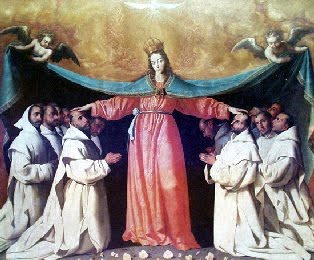 Not long ago I was listening to a radio talk show program in which the guests were two psychologists speaking about classical music. One of them said that in his opinion the reason for a decline in the popularity of classical music is because of our modern day culture’s fear of silence. If we truly do have a fear of silence then it is no wonder why morality is moving downward on the slippery slope. To fear silence is to no longer be in touch with our spiritual selves.
Not long ago I was listening to a radio talk show program in which the guests were two psychologists speaking about classical music. One of them said that in his opinion the reason for a decline in the popularity of classical music is because of our modern day culture’s fear of silence. If we truly do have a fear of silence then it is no wonder why morality is moving downward on the slippery slope. To fear silence is to no longer be in touch with our spiritual selves.Our Holy Father Pope Benedict XVI taught on the subject of silence by using the example of Saint Joseph who maintained an interior silence “interwoven with constant prayer.” The Holy Father went on to say: “Let us allow ourselves to be infected by the silence of Saint Joseph. We need it very much, in a world that is often too noisy.”
During a 1998 pastoral visit to Turin, our Holy Father of happy memory, Pope John Paul II spoke on the Holy Shroud of Turin with these words: “The Shroud is an image of silence. There is a tragic silence of incommunicability, which finds its greatest expression in death, and there is the silence of fruitfulness, which belongs to whoever refrains from being heard outwardly in order to delve to the roots of truth and life. The Shroud expresses not only the silence of death but also the courageous and fruitful silence of triumph over the transitory, through total immersion in God's eternal present. It thus offers a moving confirmation of the fact that the merciful omnipotence of our God is not restrained by any power of evil, but knows instead how to make the very power of evil contribute to good. Our age needs to rediscover the fruitfulness of silence, in order to overcome the dissipation of sounds, images and chatter that too often prevent the Voice of God from being heard.”
The Catechism of the Catholic Church’s teaching on contemplative prayer states: “Contemplative prayer is silence, the ‘symbol of the world to come’ or ‘silent love.’ Words in this kind of prayer are not speeches; they are like kindling that feeds the fire of love. In this silence, unbearable to the ‘outer’ man, the Father speaks to us His incarnate Word, Who suffered, died, and rose; in this silence the Spirit of adoption enables us to share in the prayer of Jesus” (2717).
In Sacred Scripture are these beautiful words: “Behold, I stand at the door and knock; if anyone hears My Voice and opens the door, I will come into him and eat with him, and he with Me. He who has an ear let him hear…” (Revelation 3:20, 22). Scripture may suggest, though, that the knock is likely a gentle knock or a tap, not something that could be heard in a noisy atmosphere: “Behold, the Lord passed by, and a great and strong wind rent the mountains, and broke in pieces the rocks before the Lord, but the Lord was not in the wind; and after the wind an earthquake, but the Lord was not in the earthquake; and after the earthquake a fire, but the Lord was not in the fire; and after the fire a still small Voice” (1 Kings 19:12).
A farmer visited daily the chapel of Saint Jean-Marie Vianney. Around noontime every day he would show up and pray before the Blessed Sacrament. Being curious, the Curé d’Ars finally asked the farmer about his daily visits. And speaking about the Blessed Sacrament the farmer said: “I look at Him and He looks at me.” This is the look of love. It is love for the Redeemer that would compel anyone to visit the Blessed Sacrament daily; and they who do so are granted the gaze of a greater love. No words are necessary.
Whether visiting the Blessed Sacrament or just having an interior moment, if it is necessary to have any words spoken, perhaps most fitting is a word often found in Sacred Scripture: “BEHOLD!”











